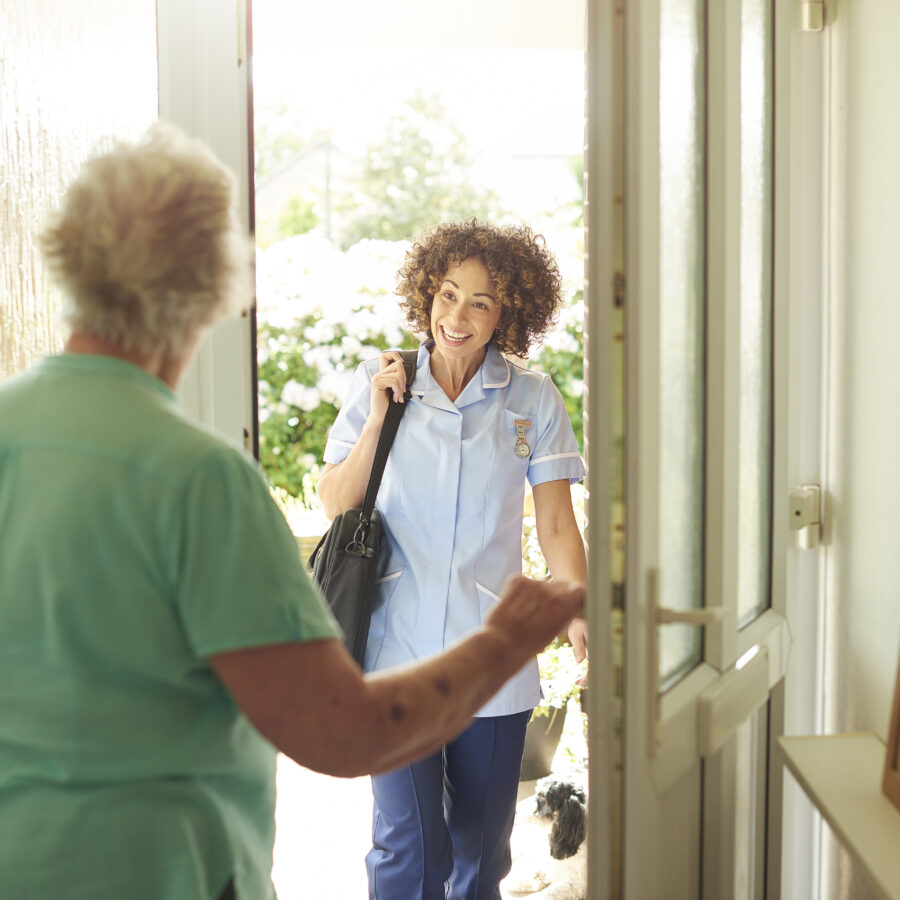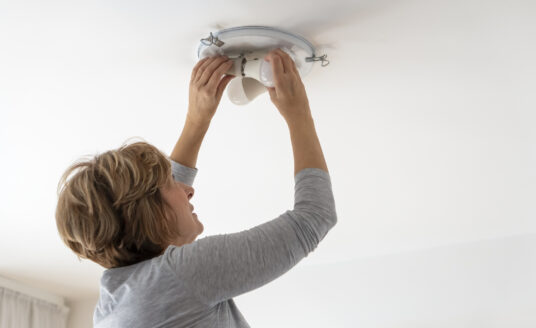The time has come for your senior loved one to begin receiving professional in-home care services. Whether it is a couple of hours a few times a week or 24-hour-per-day care, some home preparation will make the experience more positive and effective for the caregivers, your loved one, and you as a family member.
5 Ways to Prepare a Home for a Senior Care Professional
1. Cover the Basics
Depending upon the services to be provided, there are some items that should be on hand for your senior’s caregiver. Try to stock the home with these items before their arrival:
- Cleaning supplies
- Necessary paper products
- Spare light bulbs
- Personal hygiene items
- Groceries
- Pet food and supplies
- Accessible storage for supplies
The home care organization may be able to assist in procuring these items.
Also, basic amenities include furniture for the caregiver (table and chairs) and a comfortable environment (which includes coming to an agreement on the house temperature).
2. Safety Considerations for the Home
Make sure items like furniture, stair railings and steps are in good condition, for the safety of both your senior loved one and their caregiver. Remove clutter, as it may cause tripping hazards. The house doesn’t have to be spotless, but it should be clean enough to not be a source of injury or illness. Appliances should be accessible and in good working order.
Items that make the home safer for the senior may also help the caregiver avoid accidents or injury. Examples of these include:
- Horizontally mounted grab bars near toilet and tub
- Non-slip bath mats
- Keeping the bathroom door unlocked
- Water heater temperature maximum below 120 degrees
- Bright lighting throughout the house (and no burned-out bulbs)
- Light switches at top and bottom of stairways
- No throw rugs
- Carpets free of tears and in good condition
- Working smoke detectors
- Fire extinguisher
- A shower chair if needed
- Canes and walkers in good repair
Also, the exterior of the house should be examined for any items that might pose an accident risk.
If you employ an in-home care and services organization, the staff should have some ideas and suggestions for improving home safety and other items that will be needed before the first caregiver arrives.
3. Pet Introductions
The first thing to greet the caregiver at the front door may well be the seniors’ dog or other pets. Perhaps they are friendly and loveable, overly excitable, or not good with strangers at all. Whatever the case, it is a good idea to secure them on a leash or in another part of the house and make a more gradual introduction.
4. Important Information to Exchange
Just as it is important to prepare the home for the caregiver, it is important to prepare the senior and the caregiver if the senior is living with dementia. Again, the in-home care services organization will probably ask about the needs of the senior, including those that come with living with dementia, prior to the first caregiver visit.
The information below is good for the caregiver to have about seniors, even if dementia is not present. Some of the basic items include:
- The person’s medical history
- Their daily routine and behavioral patterns
- What activities the senior enjoys
- Information about their life history
- The senior’s current interests
5. Prepare the Senior
Prior to the first professional caregiver visit, you should prepare your loved one, as they may be uncomfortable having a stranger in their home on a regular basis. They may feel overly supervised by a virtual stranger or concerned that they have to entertain or constantly engage this person.
Preparing seniors is about having conversations early and often in order to understand what kind of care they expect, and what may be unacceptable to them. This means including them in discussions with the in-home care services representative. The dialogue should focus on the agreement that some professional, supervised care is needed in the home, as opposed to taking a “this is the way it’s going to be” tone.
Resistance to a professional caregiver may still occur. If possible, introduce supportive care gradually—perhaps some housekeeping or medication supervision a couple of days a week to start, or transportation to a doctor’s appointment. This allows for some adjustment and a buildup of trust.
A good, basic relationship should be established between the senior and their caregivers so that the senior does not feel invaded or imposed upon.
As your loved one becomes more challenged physically and cognitively, the care plan will have to change and become more comprehensive. If, however, the relationship between loved one and caregiver becomes too challenging, talk to your home care agency or services representative.
Bethesda Senior Support Solutions services provide in-home senior care across the St. Louis area. This private-duty care is customized to each senior’s unique needs, whether you need 24-hour care or simply the occasional helping hand. Contact us today to learn more about in-home senior care.
| Whether in independent living, assisted living, memory care, or skilled nursing, Bethesda offers the right amenities, services, programming, and staff to make every day full of purpose. See for yourself and tour our independent living communities, including Bethesda Barclay House – Clayton, Bethesda Gardens – Kirkwood, Bethesda Orchard – Webster Groves, Bethesda Terrace – South County, Village North Retirement Community – Florissant, and The Oaks at Bethesda Villas – Kirkwood/Webster. |
Want to find out more?
If you’d like to stay up to date with Bethesda Health Group, sign up here to receive our blog and newsletters!
"*" indicates required fields
Related Articles
Want to find out more?
If you’d like to stay up to date with Bethesda Health Group, sign up here to receive our blog and newsletters!
"*" indicates required fields



